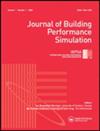在预测性数字孪生中使用直播数据的挑战
IF 2.3
4区 工程技术
Q2 CONSTRUCTION & BUILDING TECHNOLOGY
引用次数: 2
摘要
数字孪生的一个关键组成部分是监控数据,从物理系统传输到虚拟表示,用于可视化和仿真。然而,很少有人关注处理直播数据的实用性。需要制定战略,以提供连续的访问和存储,处理质量不确定的数据,并确保数据通信系统的长期可持续性。本文描述了可操作数字孪生的数据通信基础设施、三维可视化和数据解释工具以及模型开发和实现的设计。结论是流数据的信息量是数字孪生成功开发和运行的关键。本文强调需要进一步研究确保数据质量和预测效果的技术。商业上运营的数字孪生很少被详细描述;讨论为今后协作开发一致的操作和交互框架提供了基础。本文章由计算机程序翻译,如有差异,请以英文原文为准。
The challenges of using live-streamed data in a predictive digital twin
A key component of a digital twin is the monitored data, communicated from the physical system to the virtual representation, for visualization and simulation. Yet little attention has been paid to the practicalities of working with live-streamed data. Strategies are required for providing continuous access and storage, for processing data of indeterminate quality, and for ensuring long-term sustainability of data communication systems. This paper describes design of the data communication infrastructure, 3D visualization and data interpretation tools, and model development and implementation, for an operational digital twin. Conclusions are drawn pertaining to the informativeness of streamed data, key for successful digital twin development and operation. The paper highlights the need for further research into techniques for ensuring data quality and forecasting efficacy. Digital twins operated commercially are rarely described in detail; the discussion provides a basis for future collaborative development of a consistent operational and interactive framework.
求助全文
通过发布文献求助,成功后即可免费获取论文全文。
去求助
来源期刊

Journal of Building Performance Simulation
CONSTRUCTION & BUILDING TECHNOLOGY-
CiteScore
5.50
自引率
12.00%
发文量
55
审稿时长
12 months
期刊介绍:
The Journal of Building Performance Simulation (JBPS) aims to make a substantial and lasting contribution to the international building community by supporting our authors and the high-quality, original research they submit. The journal also offers a forum for original review papers and researched case studies
We welcome building performance simulation contributions that explore the following topics related to buildings and communities:
-Theoretical aspects related to modelling and simulating the physical processes (thermal, air flow, moisture, lighting, acoustics).
-Theoretical aspects related to modelling and simulating conventional and innovative energy conversion, storage, distribution, and control systems.
-Theoretical aspects related to occupants, weather data, and other boundary conditions.
-Methods and algorithms for optimizing the performance of buildings and communities and the systems which service them, including interaction with the electrical grid.
-Uncertainty, sensitivity analysis, and calibration.
-Methods and algorithms for validating models and for verifying solution methods and tools.
-Development and validation of controls-oriented models that are appropriate for model predictive control and/or automated fault detection and diagnostics.
-Techniques for educating and training tool users.
-Software development techniques and interoperability issues with direct applicability to building performance simulation.
-Case studies involving the application of building performance simulation for any stage of the design, construction, commissioning, operation, or management of buildings and the systems which service them are welcomed if they include validation or aspects that make a novel contribution to the knowledge base.
 求助内容:
求助内容: 应助结果提醒方式:
应助结果提醒方式:


